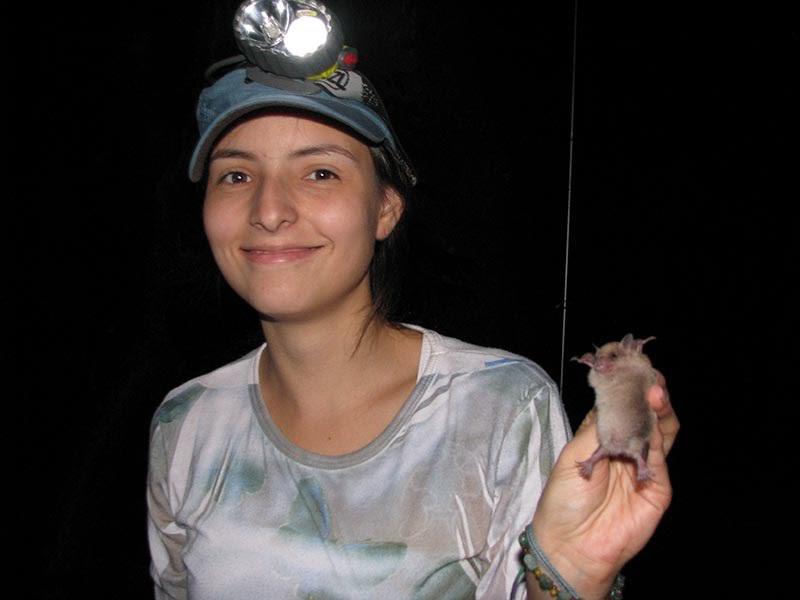Natalia Cortes Delgado
The aim of the project is to determine how Sturnira ludovici use the roosting and food resources available in shade coffee plantations and forest fragments in Veracruz, Mexico.

More than 50% of original cloud forest has been cleared in Mexico, mainly for coffee crops. With this increase in the area used for agriculture comes the need to establish the extent to which agroecosystems act as biodiversity refuges. In this regard, shade agriculture systems have been shown to have greater sustainability as species habitats. Bat species such as Sturnira ludovici can cross habitats that exhibit different degrees of human intervention on agricultural landscapes with shade coffee plantations.
Of the fauna that moves through the coffee plantations, bats are distinguished because of their greater diversity in these habitats than in other crops, and even their species richness and composition is similar to that recorded in forest fragments. It is known that bats can cross the different habitats that are immersed in the agricultural landscape, thus the services they provide as seed dispersers, pollinators and in pest control can span different habitats.
If the roosting and food requirements of bats are met in modified habitats, this could explain the frequency of their visits to these sites. However, is unknown what the frugivorous bats are looking for in shade coffee plantations, besides, to date there has been no work done on the roost habits of S. ludovici.
In the study area, two shade coffee plantations and two forest fragments will be selected, and in each site, bats will be captured. Once a bat has been captured, surgical tape will be used to attach a radio transmitter. Bats will be located every 5 minutes by triangulating on the signal direction. Once a roost has been located the following will be recorded: tree species, DBH, tree height, temperature and humidity at or inside and away from the roost, the state of the roost (dead or alive) and the height at which the bats are roosting. The abundance of available fruit will be sampled also.
Taking into account that Mexico is in eighth place worldwide for coffee production where coffee plantations cover more than 806000 ha of land, by verifying what is really going on with diversity in the shade coffee, can be raised for sustainable management strategies from the point of view of conservation that offers the opportunity to have a good production but also provide resources for the survival of species, and can even highlight the importance of maintaining forest fragments in agroecosystems that can provide shelter for different species.